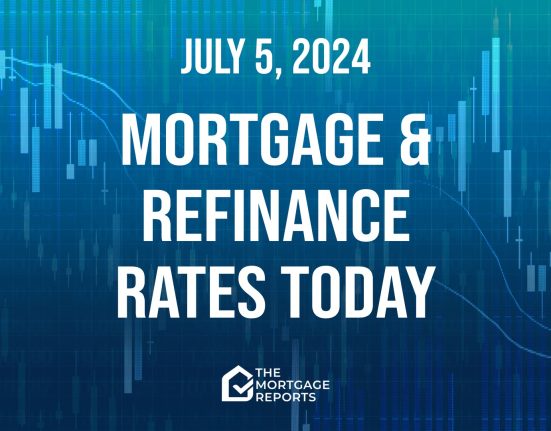Key Takeaways
- U.S. stock markets will switch to a T+1 settlement cycle from a T+2 cycle on Tuesday.
- Under a T+1 cycle, the settlement date (when a trade is finalized and funds and securities are delivered) must take place by the business day following the trade date (when the trade is executed).
- Shortening the length of time between trade and settlement by a day should increase market efficiency and reduce risk in many areas. It also reduces time to correct any mistakes before a trade goes through.
- For investors working with broker-dealers, there is likely little to do differently in a T+1 system. However, investors using an automated clearing house to facilitate payments or still trading using physical paper securities certificates will need to adjust their timelines.
Beginning Tuesday, the time for stock transactions to get completed will be cut in half as a ‘T+1’ settlement cycle goes into effect. Here’s what you need to know about the change.
What is a T+1 Settlement Cycle?
To understand a T+1 settlement cycle, it’s important to keep in mind how trades in the market are processed. The day in which you execute a buy or sell order for a given security is known as the trade date. Following this, there is a brief window of time in which parties involved in the trade are required to prepare and deliver funds and securities. This last part of the process, known as the settlement date, is when the order is finalized.
Prior to 2017, the U.S. markets operated on a T+3 settlement cycle, meaning that the settlement date could be no longer than three days after the trade date. From 2017 through this latest change, the cycle has been T+2, shortening the prior process by a day. Starting May 28, settlement must occur the day following the trade execution.
“For everyday investors who sell their stock on a Monday, shortening the settlement cycle will allow them to get their money on Tuesday,” U.S. Securities and Exchange Commission (SEC) Chair Gary Gensler said in press release this week.
Improvements in technology have made it possible for settlement periods to shorten. Indeed, the U.S. is not the only country to move to a T+1 model. The SEC voted in February 2023 to adopt a T+1 settlement cycle. Following the announcement of the vote, both Canada and Mexico announced plans to adopt T+1 on May 27, 2024.
Why Move to T+1?
Shortening the settlement cycle will help to foster greater market efficiency, which in turn may help to protect investors. Because the settlement period offers time in which one or both participants in a trade may fail to complete and finalize the trade for a variety of reasons, reducing this time should help to minimize systemic and operational risk. It will also help to address liquidity needs, counterparty exposure, counterparty risk for brokers, and similar concerns.
“Shortening the settlement cycle also will help the markets because time is money and time is risk. It will make our market plumbing more resilient, timely, and orderly,” Gensler said.
How a T+1 Settlement Will Affect Your Stock Trades
On the face of it, a shorter settlement cycle does not seem to have a material influence on the way most retail investors trade stocks.
For most investors, a broker-dealer will take care of the adjusted timeline under a T+1 cycle without the investor needing to do anything differently. Most brokerages require that investors have sufficient funds in a cash account before executing a trade, meaning that the brokerage will then facilitate the payment following the trade a day earlier without the investor even knowing.
But it may be of some use to read the fine print.
A shorter settlement time will benefit investors by reducing the waiting period for them to receive money from a trade. Crystal McKeon, CFP, Chief Compliance Officer of TSA Wealth Management, explains that “many clients have always thought that when you sell the investments the funds are available the same day, which is not the case.”
The shorter timeframe between trades should make it easier and faster to get funds to clients who need money.” McKeon adds that a T+1 settlement cycle “makes the system more transparent and easier to understand for the average investor.”
There may be direct implications for investors making trades in certain situations. Investors utilizing Automated Clearing House (ACH) payments, for example, may need to initiate these payments a day earlier than they would have previously in order to meet the settlement date requirement.
May Affect Margin Trading and Stock Lending
With lower levels of risk, broker-dealers may find it possible to reduce margin requirements and collateral requirements, lowering the barrier to access for investors.
Margin traders, who need to sell liquid investments such as money market funds, to cover their trades, must also bear in mind that they have less time to get access to the funds.
“With less time to identify and recall loans, settlement fails and resulting penalties may rise,” BNP Paribas wrote in an explainer last year.
Less Margin For Error
With trades going through in half the time they used to, there is little room for investors to correct any errors, especially any cost-basis mistakes.
“Once settlement is complete, your cost basis—your total initial investment, any commissions or fees paid, and decisions on how you’ll collect dividends and distributions—is set for tax purposes,” wrote Nathan Peterson, Director of Derivatives Analysis for Schwab’s Center for Financial Research.
And any investors still holding physical paper securities certificates will be required to deliver those certificates a day earlier in the event of sale. However, the number of investors using paper certificates today is vanishingly small.







